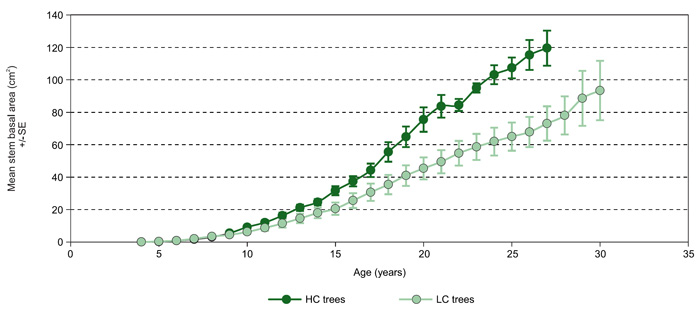| Follow @co2science |
Paper Reviewed
Vejpustkova, M., Thomalla, A., Cihak, T., Lomsky, B. and Pfanz, H. 2016. Growth of Populus tremula on CO2-enriched soil at a natural mofette site. Dendrobiology 75: 3-12.
In an enlightening new paper, Vejpustkova et al. (2016) report how they measured the inter-annual ring-width variations and cumulative growth of ten aspen (Populus tremula L.) trees growing on spots of different soil CO2 concentration within their rooting zones at a natural mofette site (an opening in a region of nearly extinct volcanic activity, through which carbon dioxide, nitrogen, and other gases pass), which they conducted in the flood plain of a stream near Hartousoz in Western Bohemia.
These trees, which were growing in a pure aspen stand, were selected on the basis of the CO2-gas regimes within their rooting zones. More specifically, five of them had mean root-zone soil CO2 concentrations of 10-25% while five others had mean concentrations of 3% or less. And what did Vejpustkova et al. learn by so doing?
The five researchers -- hailing from Germany and the Czech Republic -- report that at the age of 25 years, the basal area of the high CO2 trees exceeded that of the low CO2 trees by 39%. And in light of these significant findings, they conclude that "trees can be fertilized not only by elevated atmospheric CO2 but also when fed with CO2 via the roots." And so we see that whether above or below ground, CO2 enrichment of those environments can prove a blessing to Earth's aspen trees.

Mean cumulative stem basal area of aspen high CO2 (HC) and low CO2 (LC) trees from the Hartousov mofette location. Vertical bars indicate +/-SE. Adapted from Vejpustkova et al 2016.




